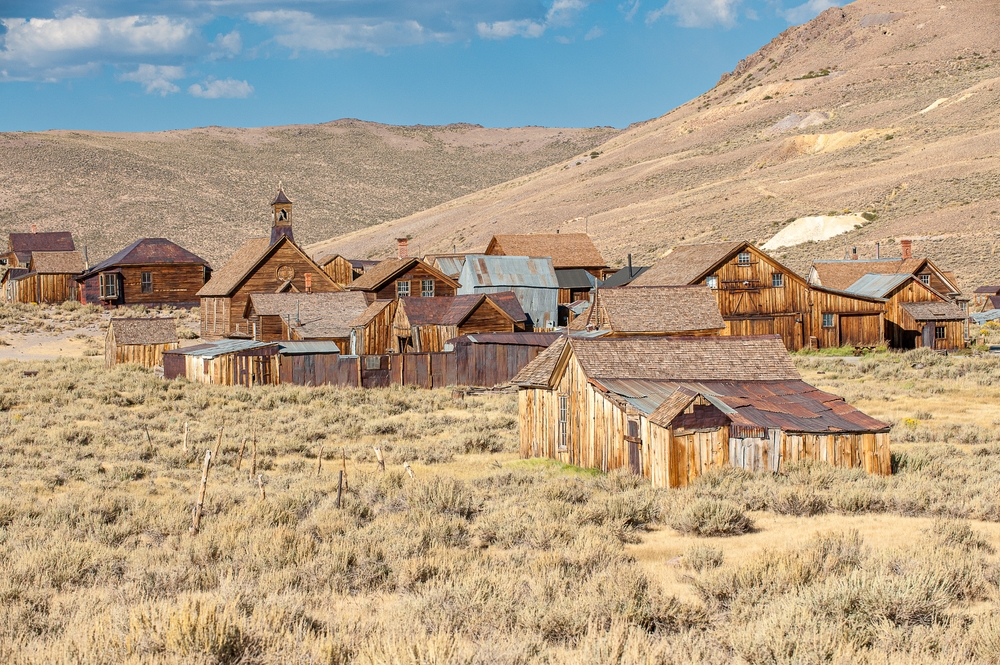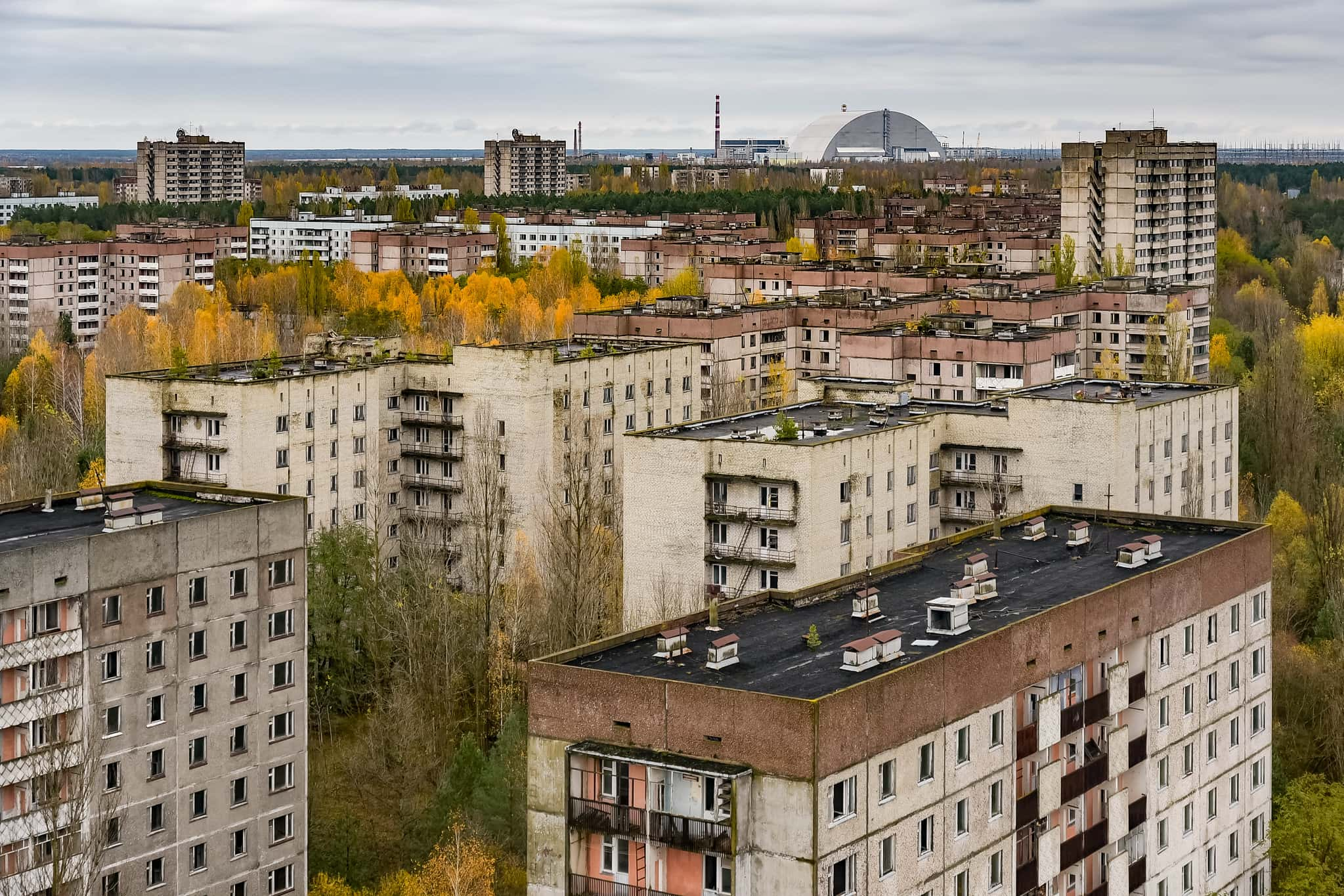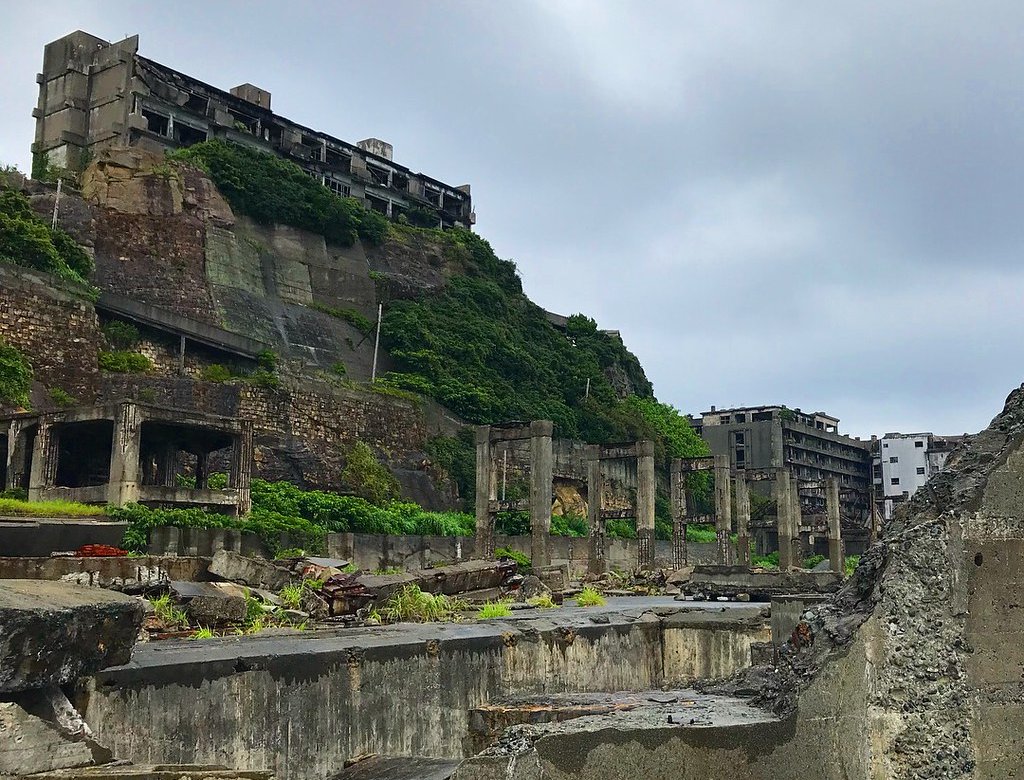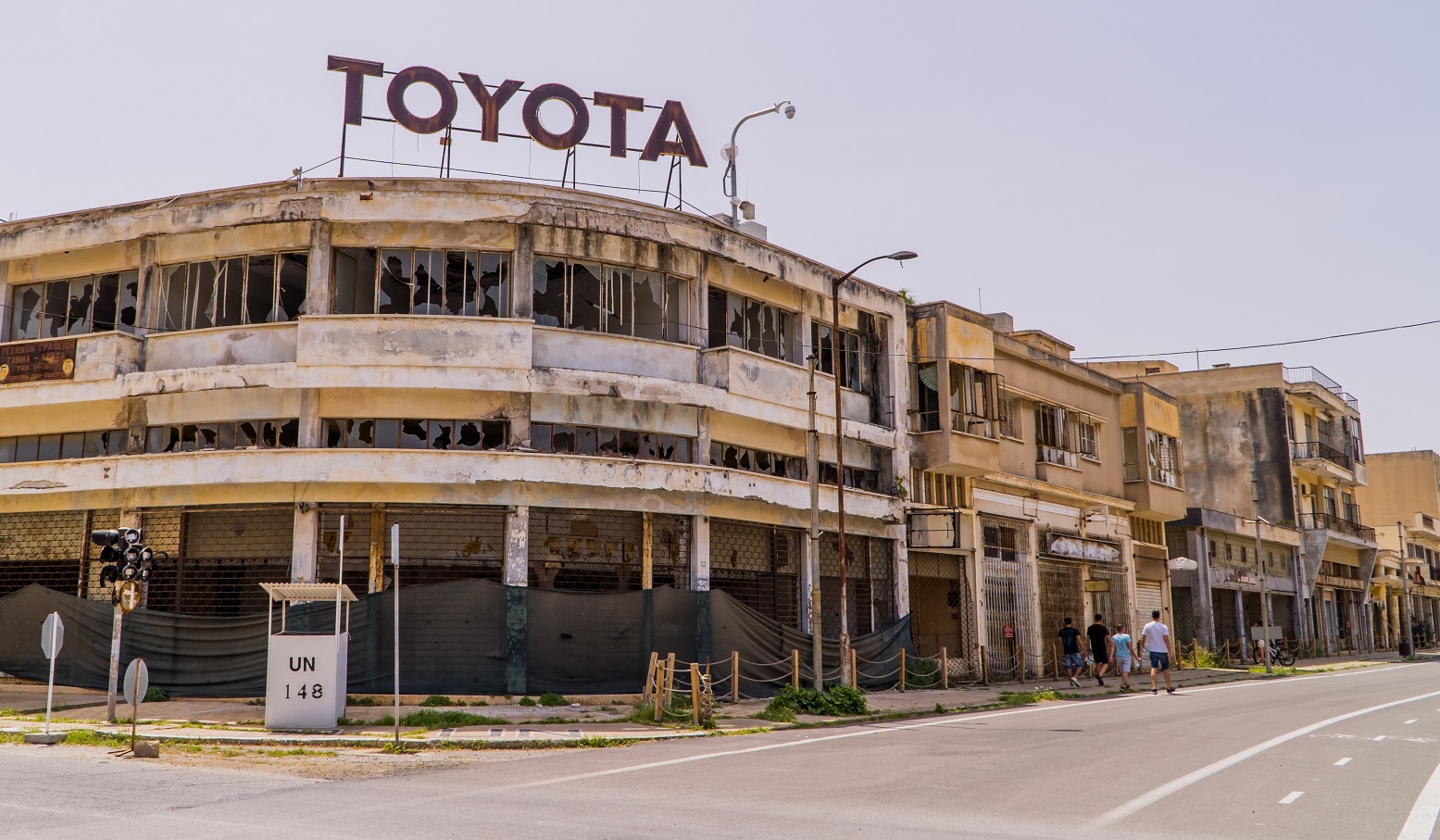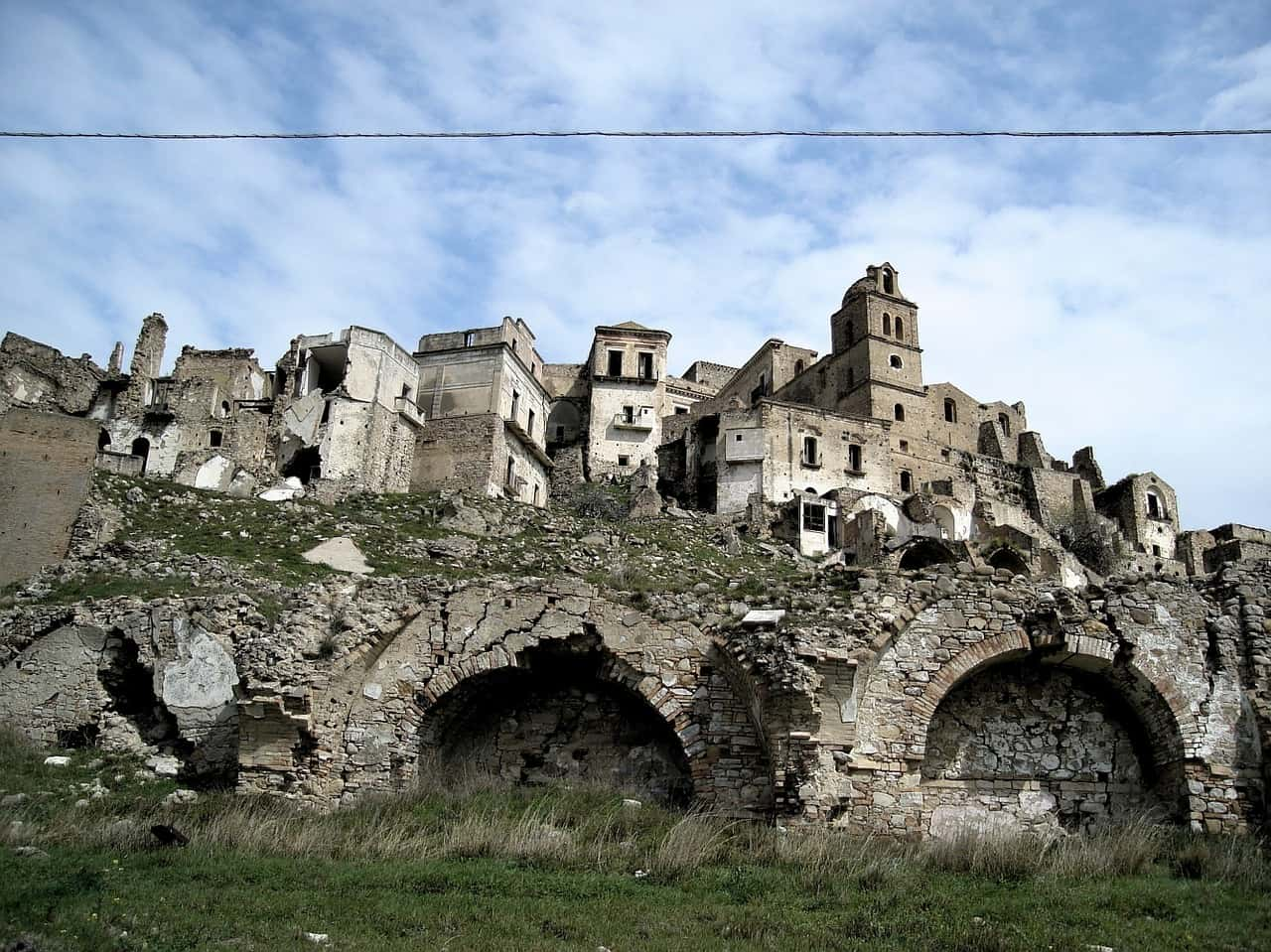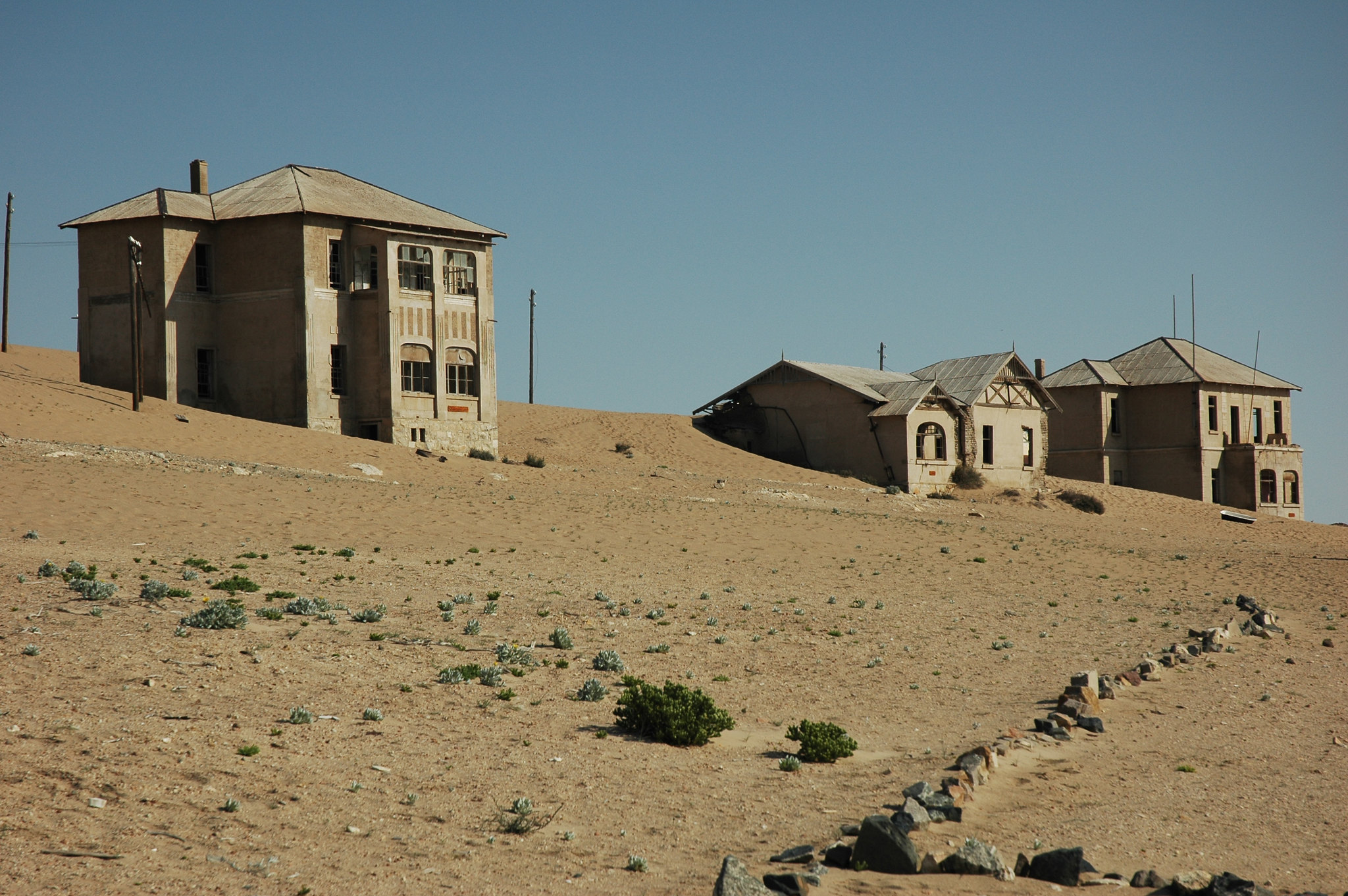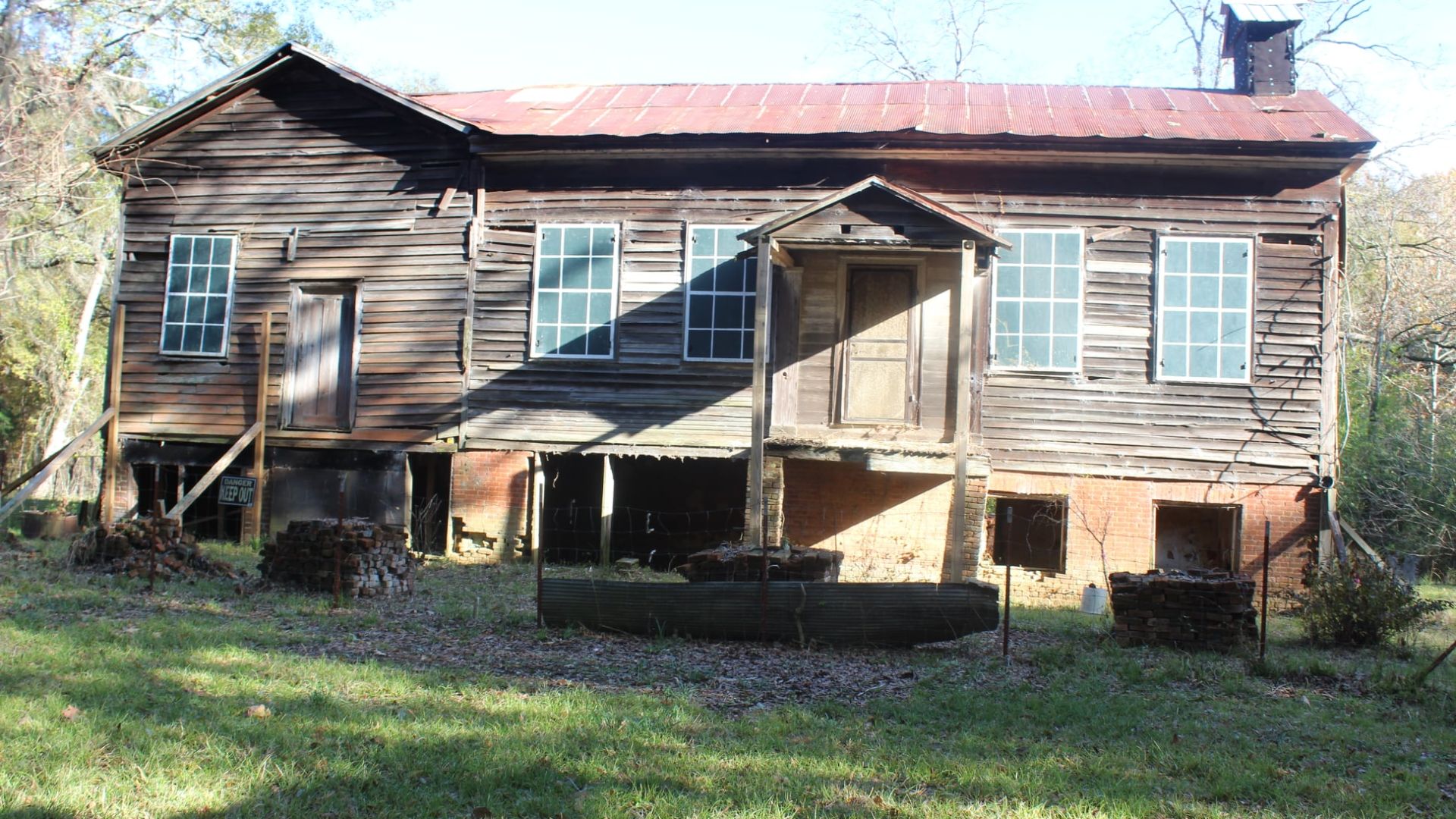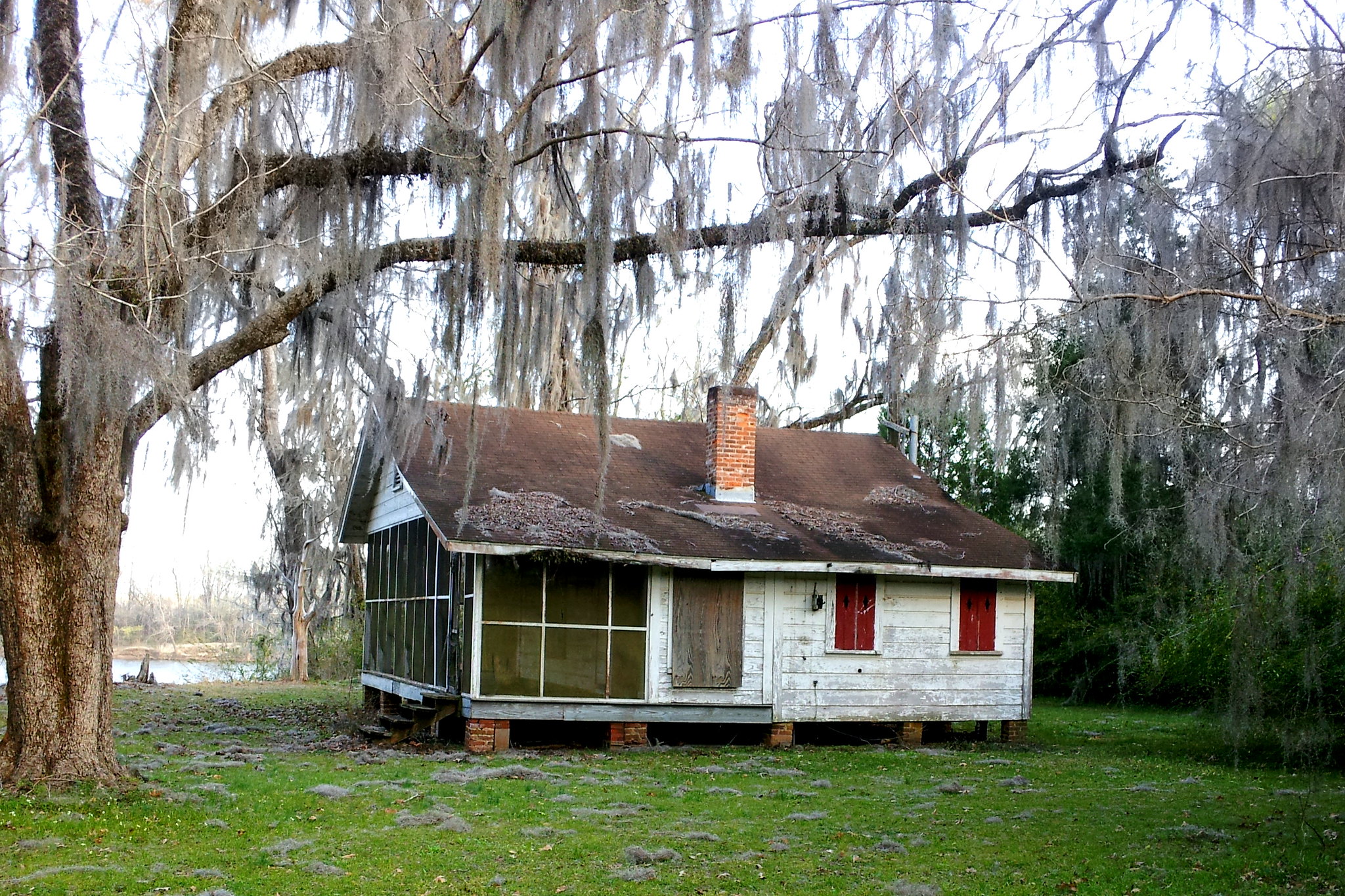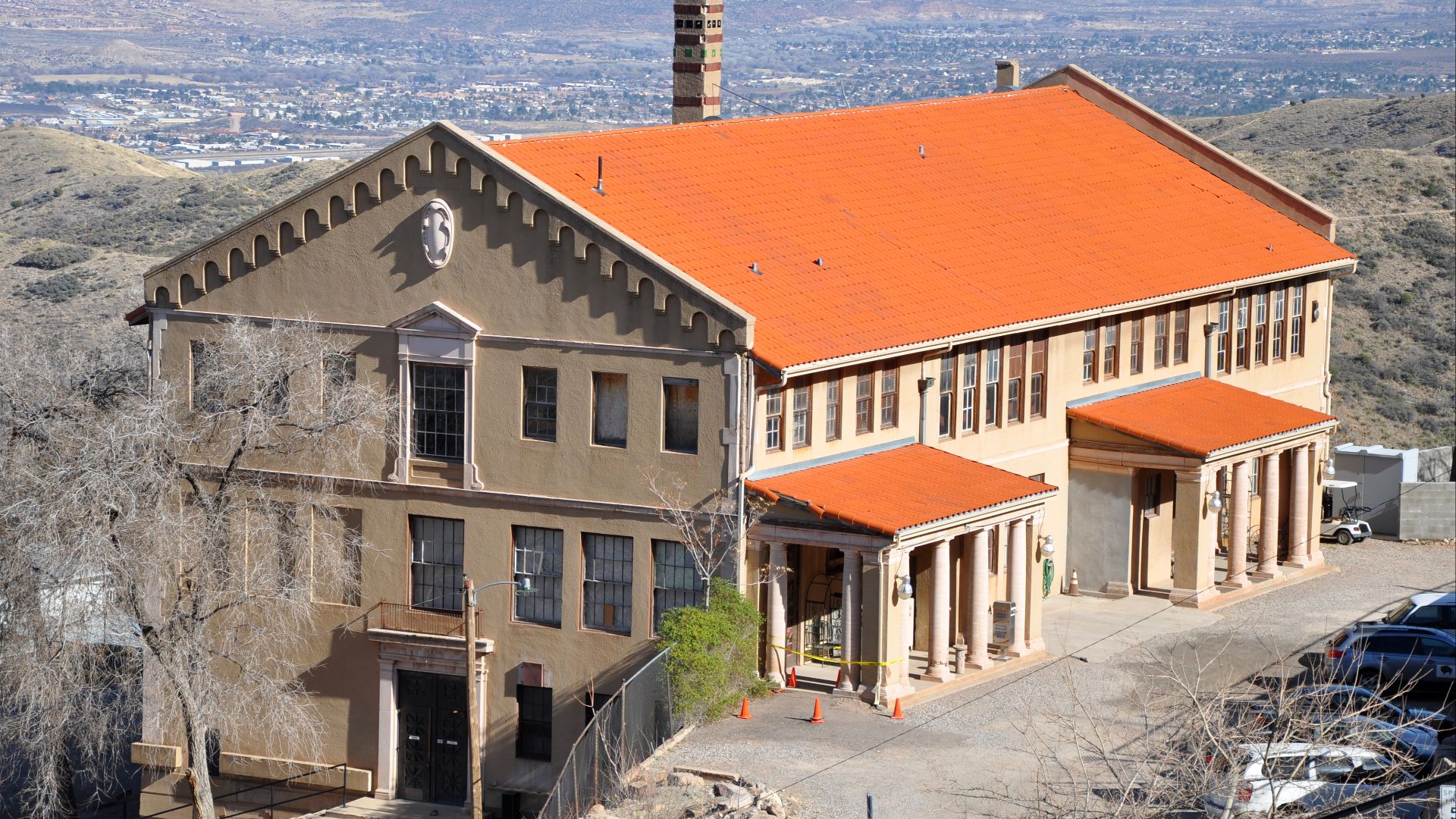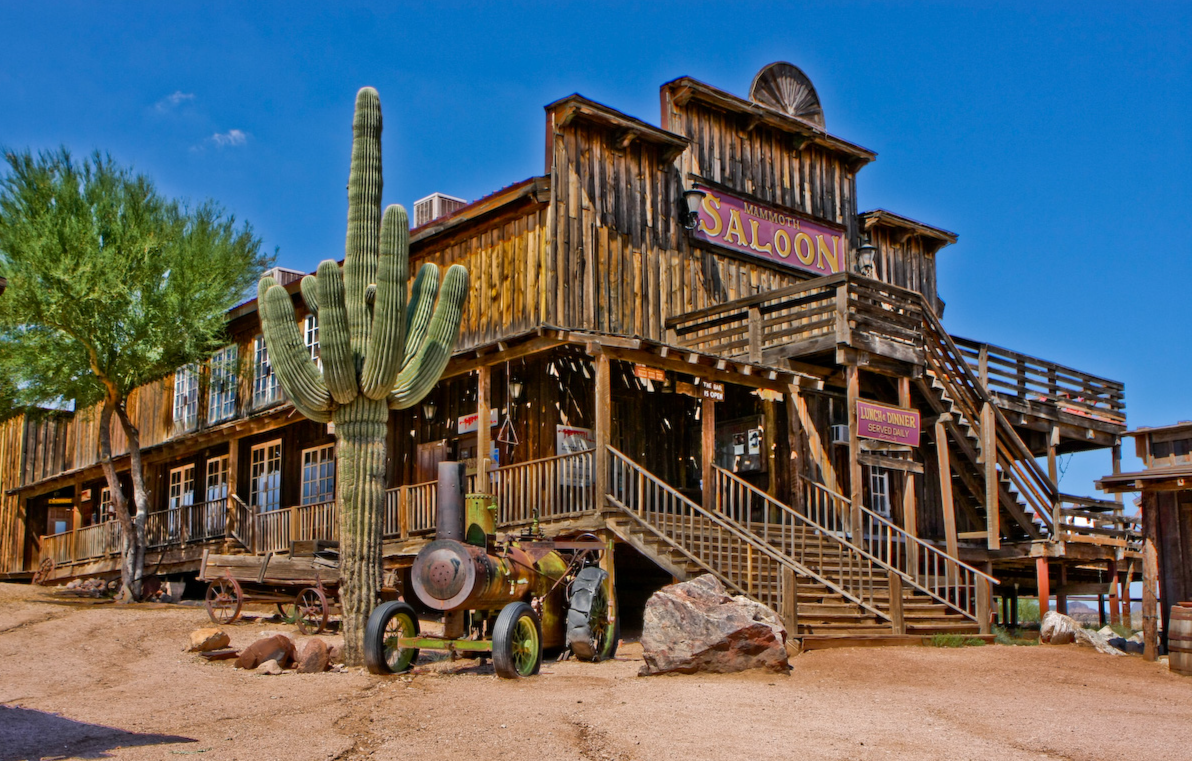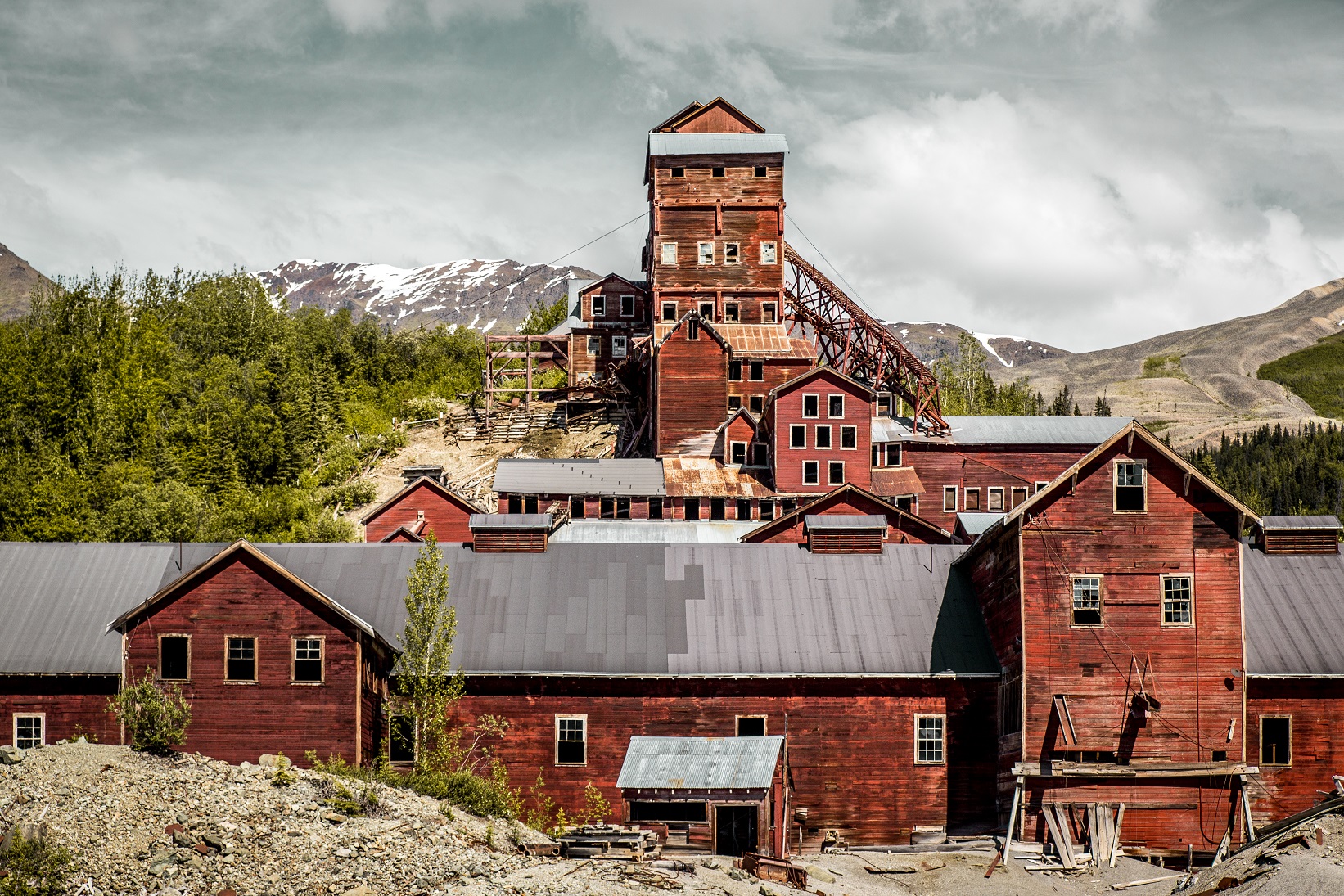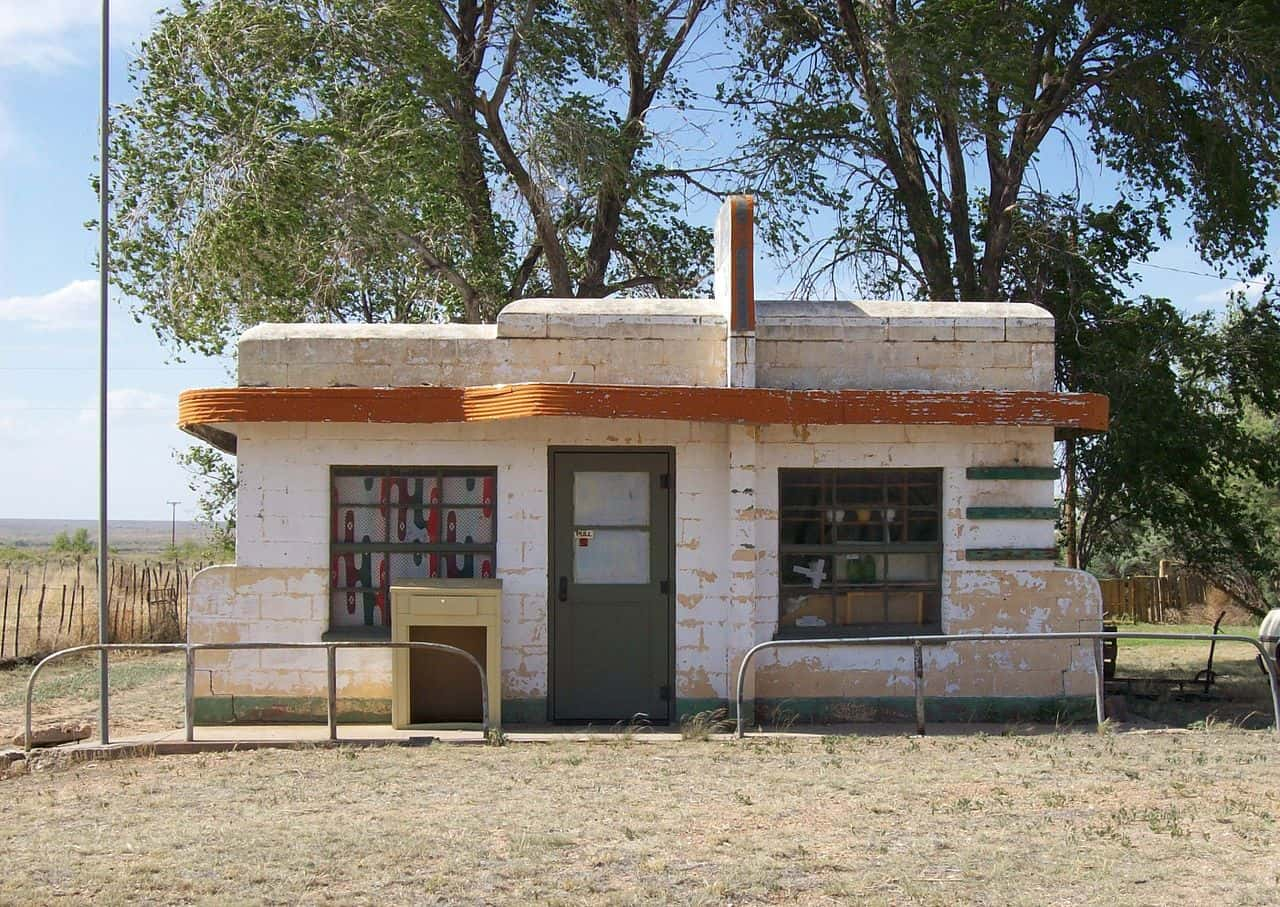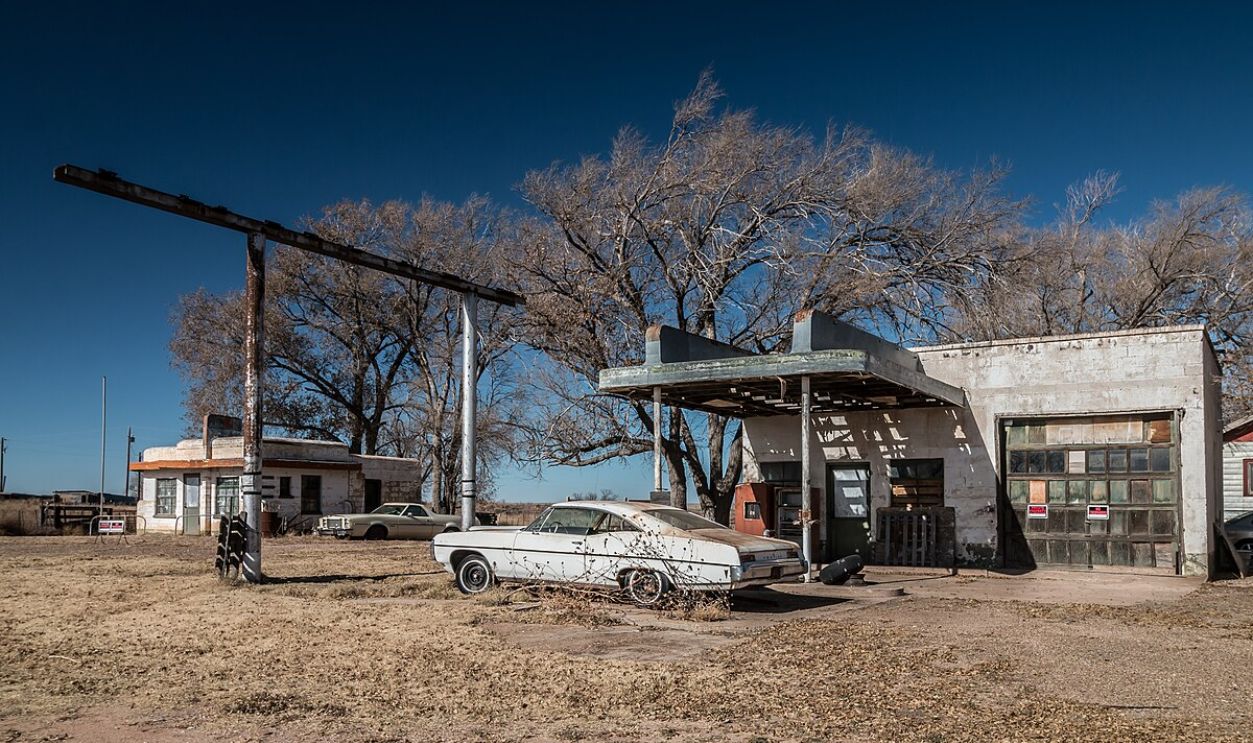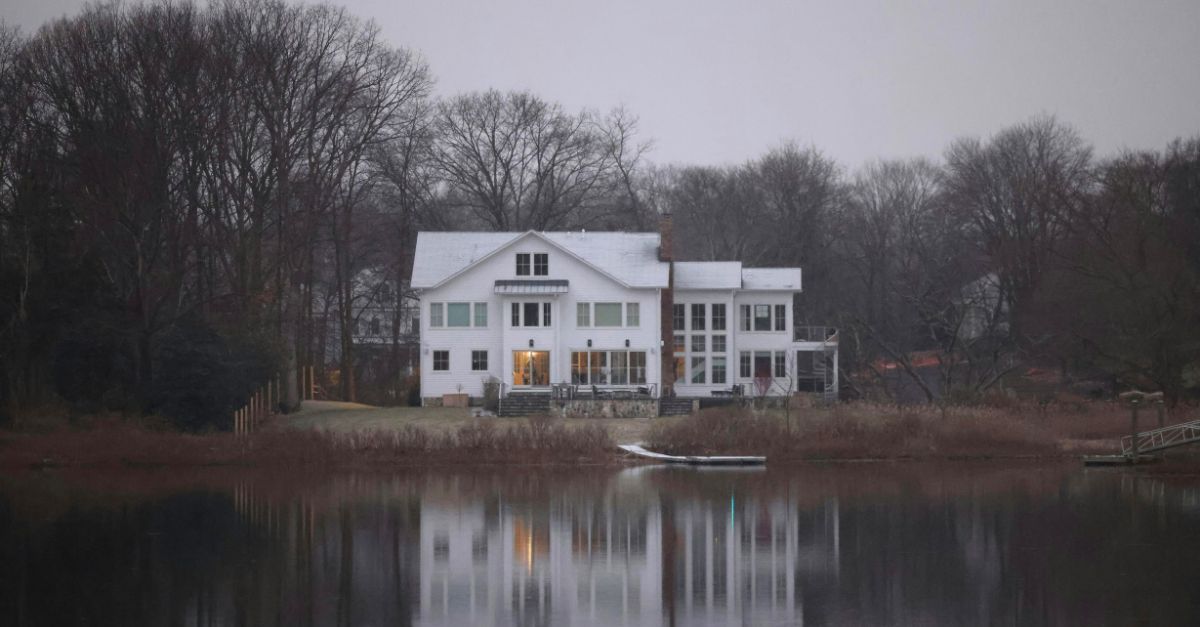Forgotten Dreams
Towns sprang up in many parts of the world with one dream in mind. They buzzed with hope, only to fade into silence as resources disappeared. Some still live on, not as strong, but alive.

Centralia
Centralia, Pennsylvania, thrived for over a century as a coal mining town. In May 1962, a landfill burn ignited an exposed coal seam beneath the town. Despite numerous attempts, the subterranean fire proved inextinguishable, which led to hazardous conditions, including toxic gases and ground subsidence.
Centralia (Cont.)
By the 1980s, most residents had relocated due to health and safety concerns, leaving Centralia largely deserted. Today, the fire continues to burn and could persist for over 250 years, rendering the area uninhabitable. Centralia's empty streets and decaying structures are a reminder of the potential impact of environmental neglect.
Bodie
Bodie, California, emerged in 1859 after prospectors discovered gold near the Sierra Nevada Mountains. The town's population surged to approximately 7,000 residents by 1879, becoming infamous for its lawlessness and earning the moniker "Badman from Bodie". As gold reserves dwindled in the late 1880s, Bodie's population declined.
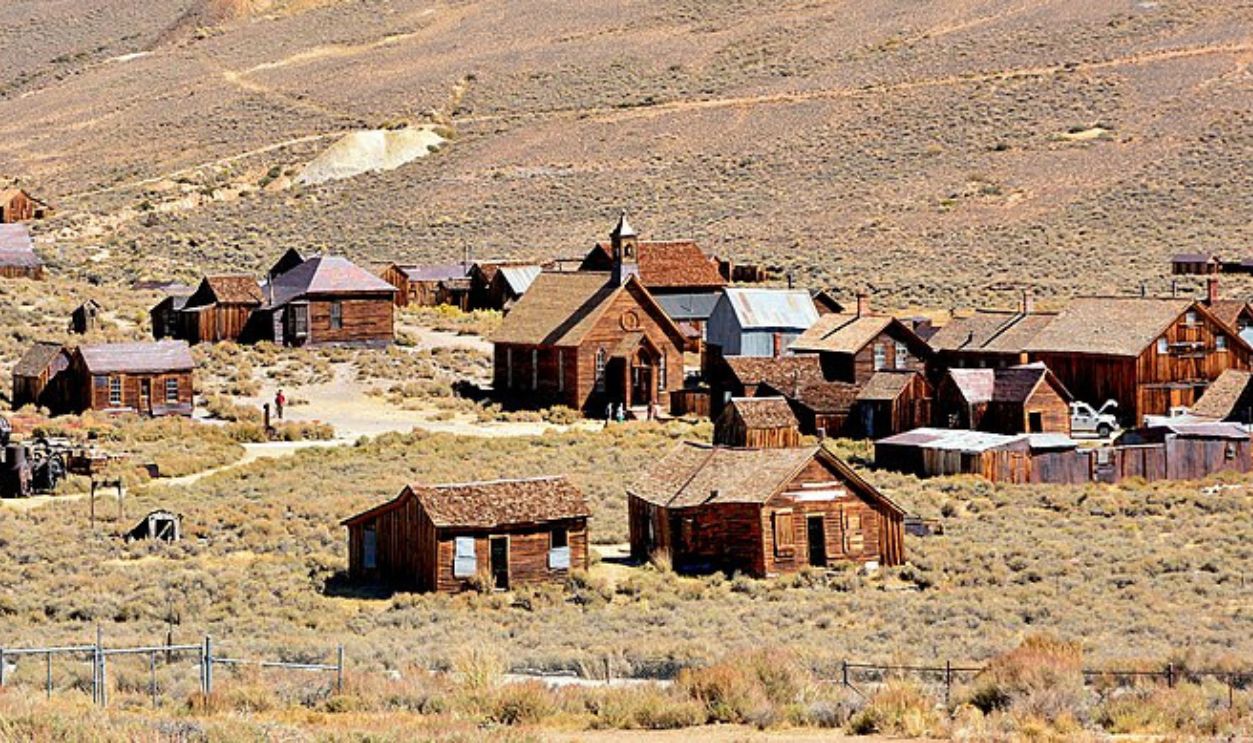 Mike McBey, CC BY 2.0, Wikimedia Commons
Mike McBey, CC BY 2.0, Wikimedia Commons
Bodie (Cont.)
The last mine closed in 1942, and this rendered it a ghost town. Bodie turned into a State Historical Park in 1962, preserving its weathered buildings in a state of "arrested decay". Visitors can still see the remnants of this abandoned mining town.
Pripyat
Pripyat, Ukraine, was founded in 1970 to accommodate workers and their families who were employed at the Chornobyl Nuclear Power Plant, growing to a population of approximately 49,360 by 1986. On April 26, 1986, Reactor No 4 at the Chernobyl plant exploded, releasing massive amounts of radiation.
Pripyat (Cont.)
The entire town of Pripyat, located just three kilometers from the plant, was evacuated 36 hours after the accident. Residents were initially told they would return after a few days, but the city remains uninhabited.
 Alexander Blecher, blecher.info, CC BY-SA 3.0, Wikimedia Commons
Alexander Blecher, blecher.info, CC BY-SA 3.0, Wikimedia Commons
Hashima Island
Hashima Island, also known as Gunkanjima or "Battleship Island," is located about 15 kilometers from Nagasaki, Japan. Established in 1887 for undersea coal mining, it was at a peak population of 5,259 in 1959. However, as coal reserves depleted, the mine closed in 1974, leading to the island's abandonment.
 kntrty, CC BY 2.0, Wikimedia Commons
kntrty, CC BY 2.0, Wikimedia Commons
Hashima Island (Cont.)
Today, Hashima's deserted concrete structures stand as a haunting reminder of industrial decline. The island gained international attention after being featured in the 2012 James Bond film "Skyfall". Recognizing its historical significance, UNESCO designated Hashima as a World Heritage Site in 2015.
Varosha
A district in Famagusta, Cyprus, Varosha was once a premier Mediterranean resort, attracting celebrities and tourists to its pristine beaches and luxury hotels. In 1974, following Turkey's military intervention in Cyprus, Varosha's inhabitants fled, leaving the area deserted.
 Zairon, CC BY-SA 4.0, Wikimedia Commons
Zairon, CC BY-SA 4.0, Wikimedia Commons
Varosha (Cont.)
For many years, Varosha was a fenced-off ghost town, representing the island's extended separation. Turkish and Northern Cypriot officials reopened sections of Varosha to the public in 2020 in a move that was widely criticized and ignited global discussion and concern regarding property rights and reunification chances.
Humberstone
Humberstone, established as "La Palma" in 1872 in Chile's Atacama Desert, was a bustling saltpeter mining town that played a key role in the global fertilizer industry. At its peak, it housed around 3,700 residents and contributed significantly to Chile's economy.
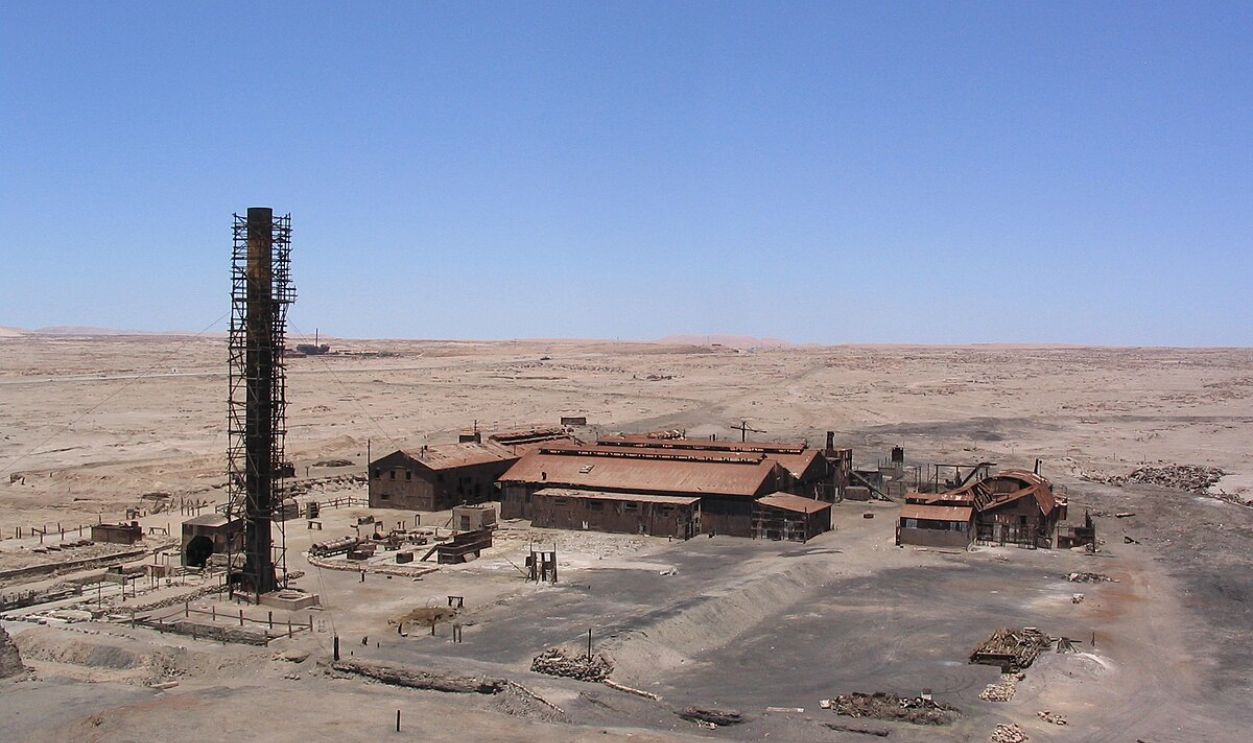 rewbs.soal, CC BY-SA 2.0, Wikimedia Commons
rewbs.soal, CC BY-SA 2.0, Wikimedia Commons
Humberstone (Cont.)
Nonetheless, the production of synthetic fertilizers during the early 20th century decreased the demand for natural saltpeter. The economic change, combined with the Great Depression, caused the gradual abandonment of Humberstone, which reached its end with its closure in 1960.
 MicroondasDelSur, Wikimedia Commons
MicroondasDelSur, Wikimedia Commons
Craco
A medieval village in Italy's Basilicata region, Craco, flourished for centuries through agriculture and trade. Founded around the 8th century AD, it thrived under various rulers, with its population peaking at 2,590 in 1561. Craco became a prosperous center for local commerce and agriculture.
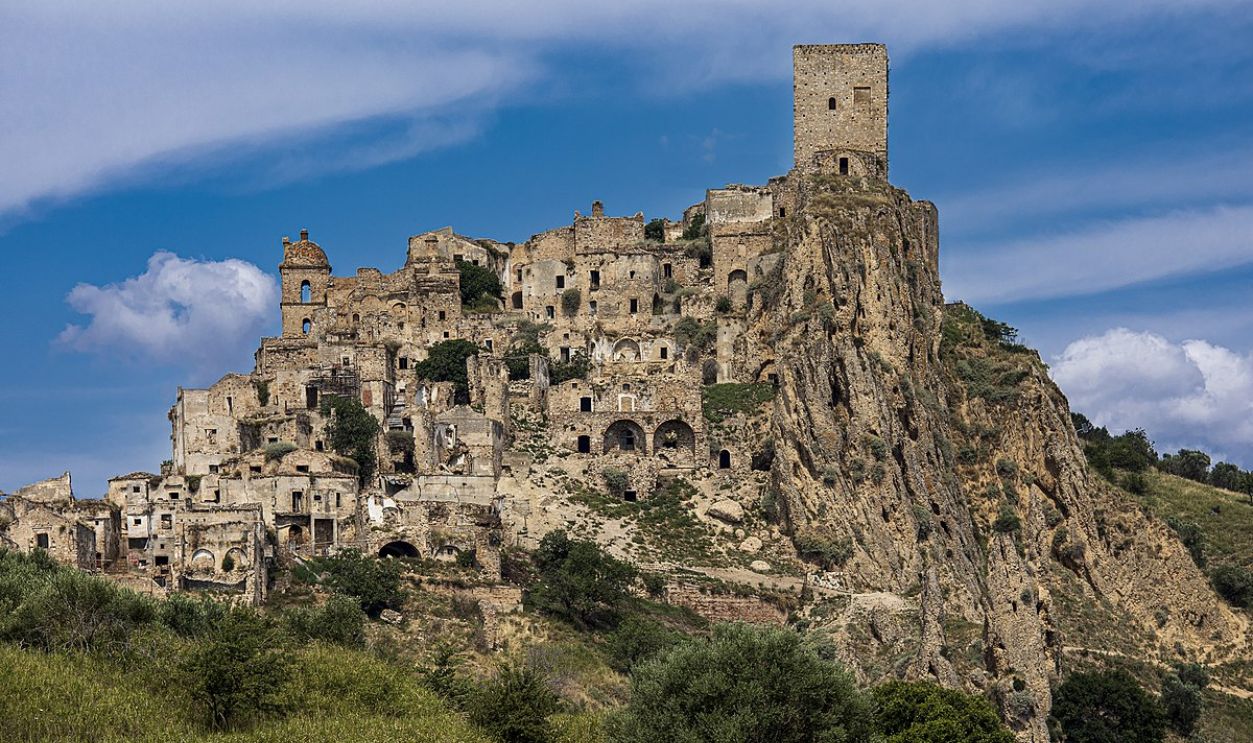 Maurizio Moro5153, CC BY-SA 4.0, Wikimedia Commons
Maurizio Moro5153, CC BY-SA 4.0, Wikimedia Commons
Craco (Cont.)
In the late 1950s, Craco showed signs of instability, with major landslides from 1959 to 1972. A severe 1963 landslide forced evacuation, marking its decline. The 1980 earthquake worsened the decay. Today, the abandoned village stands as a haunting reminder of the past.
Fordlandia
Fordlandia was founded by Henry Ford in 1928 in the Amazon rainforest, aiming to secure rubber for his automobile company. The town was built with grand plans, and it included houses, schools, and hospitals for workers. However, poor planning and environmental challenges, such as diseases and unsuitable soil, led to its decline.
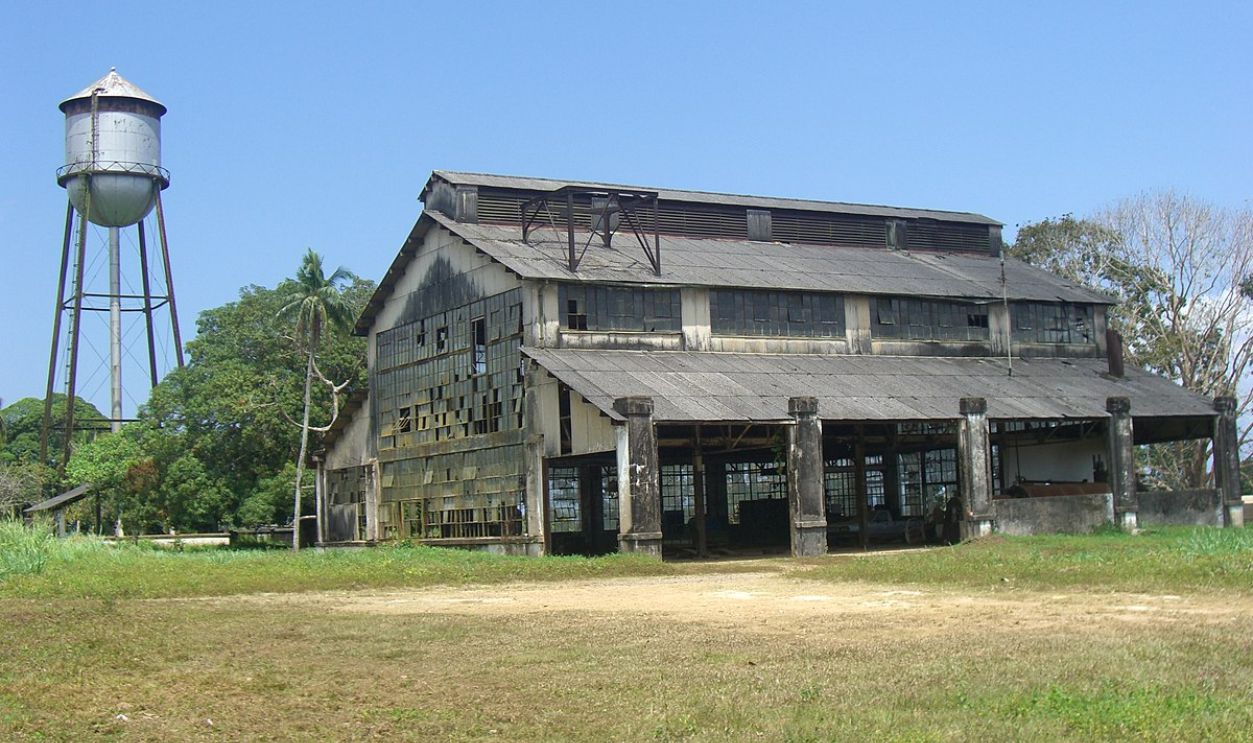 (WT-shared) Amitevron, CC BY-SA 3.0, Wikimedia Commons
(WT-shared) Amitevron, CC BY-SA 3.0, Wikimedia Commons
Fordlandia (Cont.)
By the 1930s, the project was struggling with financial losses and conflicts between American management and Brazilian workers. Rubber production was low, and the local environment didn't cooperate. In 1945, Ford sold the land back to the Brazilian government, and the town was abandoned.
Kolmanskop
Kolmanskop, a diamond mining town in Namibia, was founded in 1908 after a railway worker discovered diamonds nearby. The town quickly grew, reaching its peak in the 1920s. It was once one of the richest diamond mines in the world.
 SkyPixels, CC BY-SA 4.0, Wikimedia Commons
SkyPixels, CC BY-SA 4.0, Wikimedia Commons
Kolmanskop (Cont.)
By 1956, the diamond supply ran out, and Kolmanskop was abandoned. Over the years, sand from the surrounding desert slowly filled the buildings. Today, Kolmanskop stands as a ghost town, its decaying structures serving as a powerful reminder of nature’s power and the transient nature of human ambition.
Georgetown
Georgetown in Colorado became a successful silver mining town with the discovery of silver in 1864. Also, its population had reached around 10,000 by 1878, and it was referred to as "The Silver Queen of Colorado". However, by 1893, silver prices collapsed, leading to a significant decline in mining.
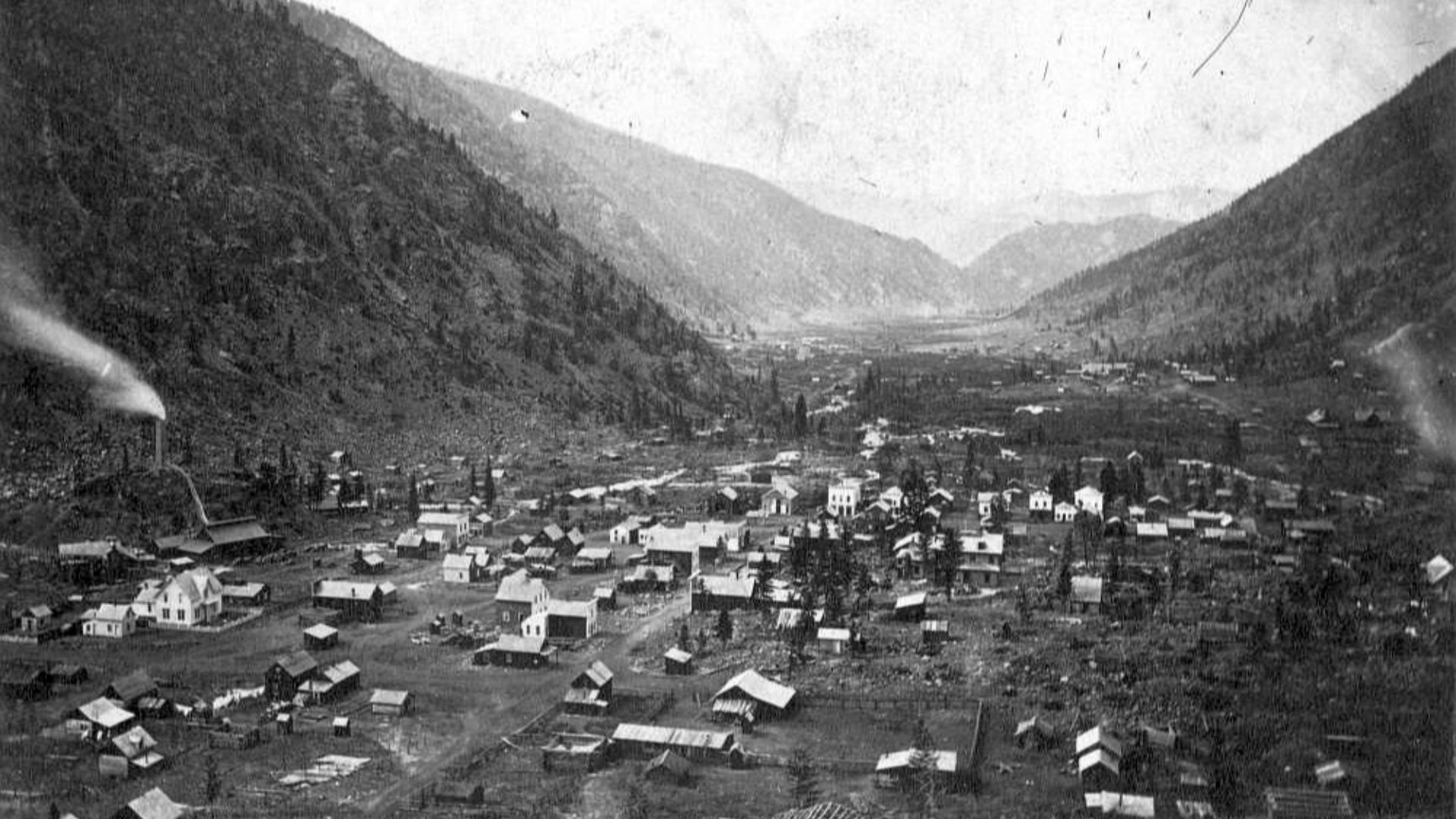 William Gunnison Chamberlain, Wikimedia Commons
William Gunnison Chamberlain, Wikimedia Commons
Georgetown (Cont.)
Georgetown's population declined as residents searching for alternative opportunities were left behind. Its restored architecture and historic Georgetown Loop Railroad are still standing today as reminders of days of prosperity and the fleeting lives of boomtowns.
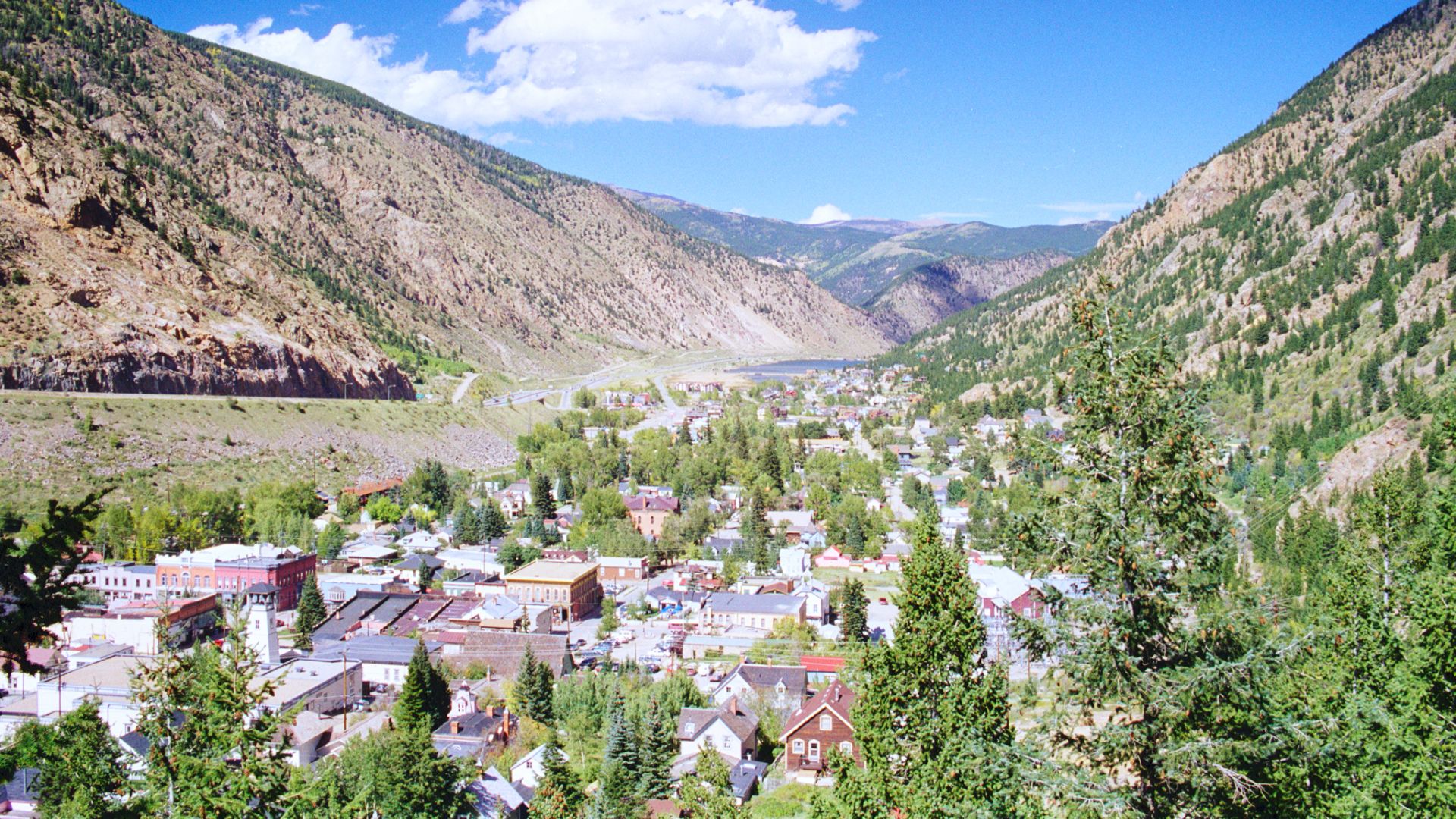 Dsdugan, CC0, Wikimedia Commons
Dsdugan, CC0, Wikimedia Commons
Rhyolite
Rhyolite in Nevada emerged as a bustling gold mining town after prospectors Shorty Harris and EL Cross discovered gold way back in 1904. Assays revealed ore values up to $3,000 per ton, attracting thousands seeking fortune.
 samiamx, CC BY 2.0, Wikimedia Commons
samiamx, CC BY 2.0, Wikimedia Commons
Rhyolite (Cont.)
By 1907, Rhyolite had a population of about 4,000, with luxuries such as electric streetlights, water pipes, and a stock exchange. However, when gold resources began to be exhausted, the town's fortunes declined. By 1916, Rhyolite was deserted, its crumbling remains as evidence of the transitory nature of boomtowns.
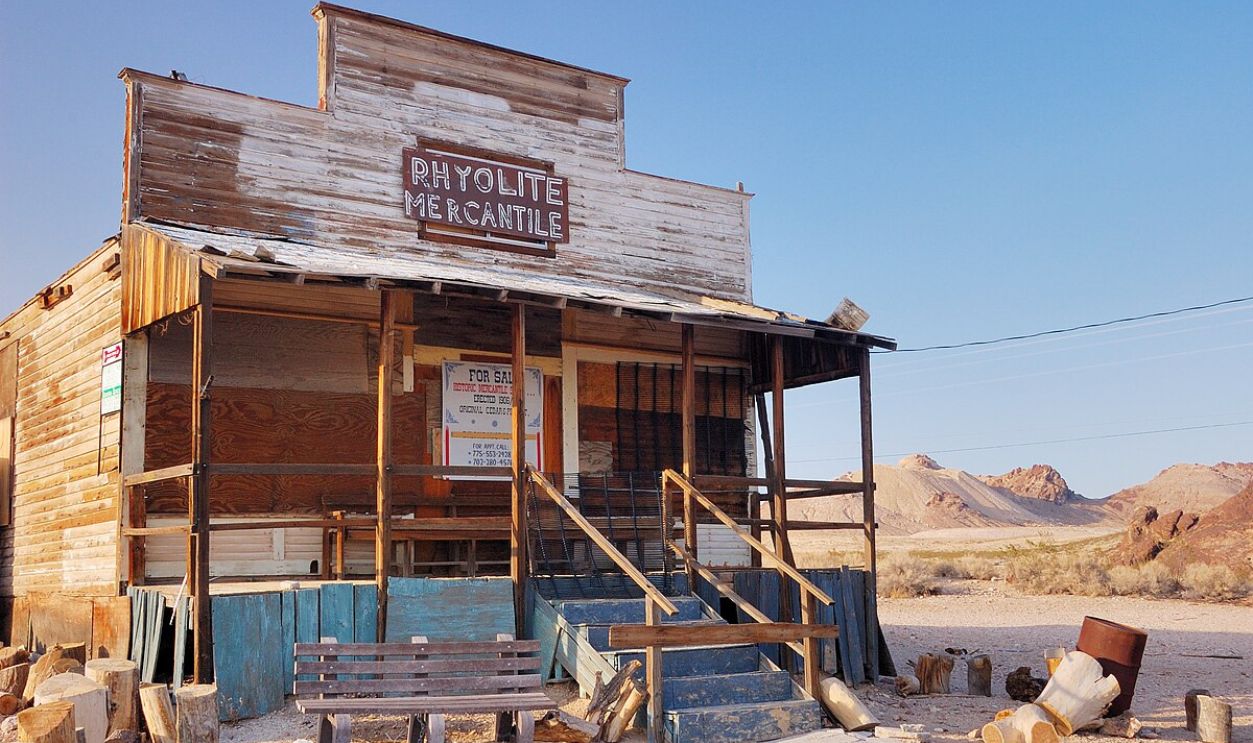 Pierre Camateros, CC BY-SA 3.0, Wikimedia Commons
Pierre Camateros, CC BY-SA 3.0, Wikimedia Commons
Bannack
This ghost town in Montana began as a mining camp in 1862 after gold was discovered in Grasshopper Creek. The city quickly grew, reaching a peak population of about 10,000. In 1864, Bannack briefly served as the capital of the Montana Territory.
 Mr Hicks46, CC BY-SA 2.0, Wikimedia Commons
Mr Hicks46, CC BY-SA 2.0, Wikimedia Commons
Bannack (Cont.)
However, as gold resources declined, the population decreased. Eventually, the town was largely abandoned by the 1970s. Today, Bannack is preserved as a state park, featuring over 60 historic structures. These well-preserved buildings stand as proof of the town's rich history and the transient nature of frontier prosperity.
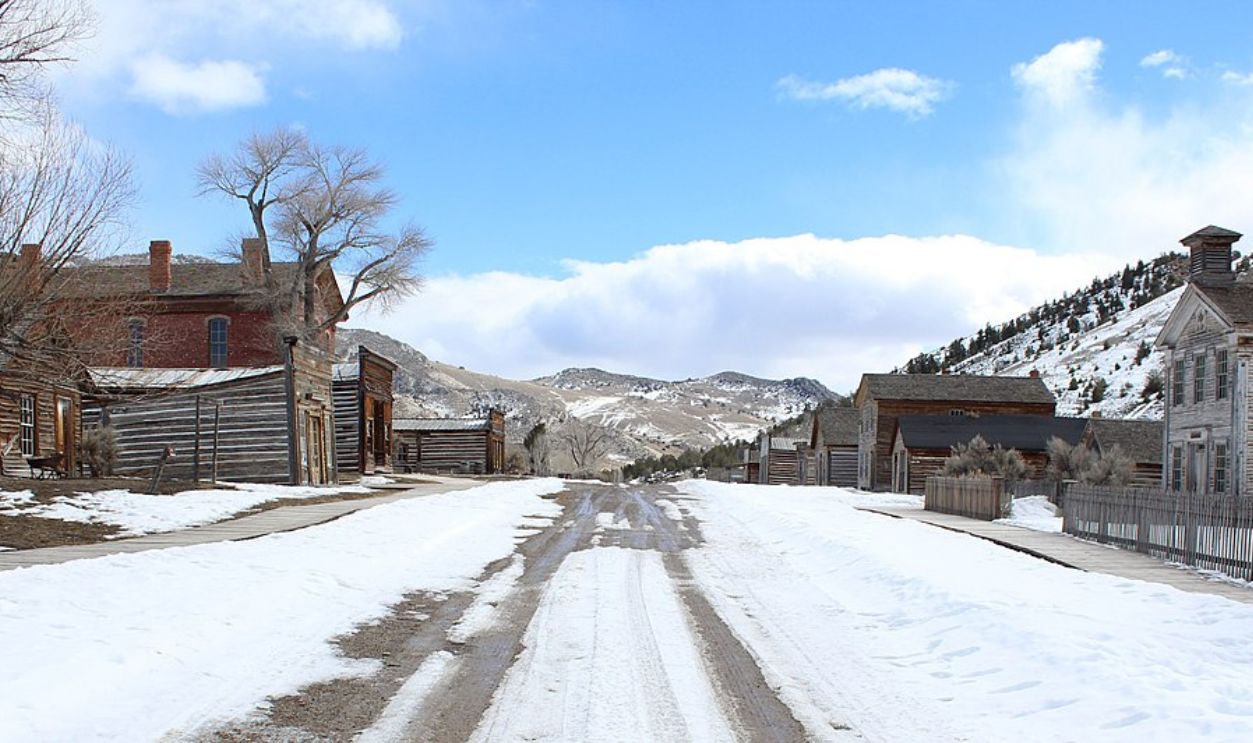 Mark Holloway, CC BY 2.0, Wikimedia Commons
Mark Holloway, CC BY 2.0, Wikimedia Commons
Cahawba
Founded in 1819, Cahawba was the first state capital of Alabama. Situated at the junction of the Alabama and Cahaba rivers, it prospered as a river port. The issue is that frequent flooding riddled the town, and it resulted in the capital being moved to Tuscaloosa in 1826.
Cahawba (Cont.)
After the Civil War, Cahawba's decline accelerated when the county seat moved to Selma in 1866. The population dwindled, and by the early 1900s, most buildings were dismantled for materials. Today, Old Cahawba Archaeological Park preserves the site as Alabama's most famous ghost town.
Jerome
Jerome, Arizona, began as a mining camp in 1876 when three prospectors discovered rich copper deposits on Cleopatra Hill. The United Verde Copper Company, established in 1883, expanded operations, turning Jerome into a bustling boomtown. During the heyday, Jerome housed over 15,000 residents and had amenities like electric lights.
Jerome (Cont.)
But by 1953, copper ore was exhausted, and the town was left abandoned. Now, Jerome's standing buildings and the Jerome State Historic Park are painful reminders of its past and the transitory lifespan of mining booms.
 Benjamin Cody, Wikimedia Commons
Benjamin Cody, Wikimedia Commons
Calico
Calico in California emerged in 1881 following the discovery of silver in the Calico Mountains. The town quickly expanded, having over 500 mines and a population of approximately 1,200 residents. At its peak, Calico's mines yielded $9 million in borate minerals and $13 to $20 million in silver.
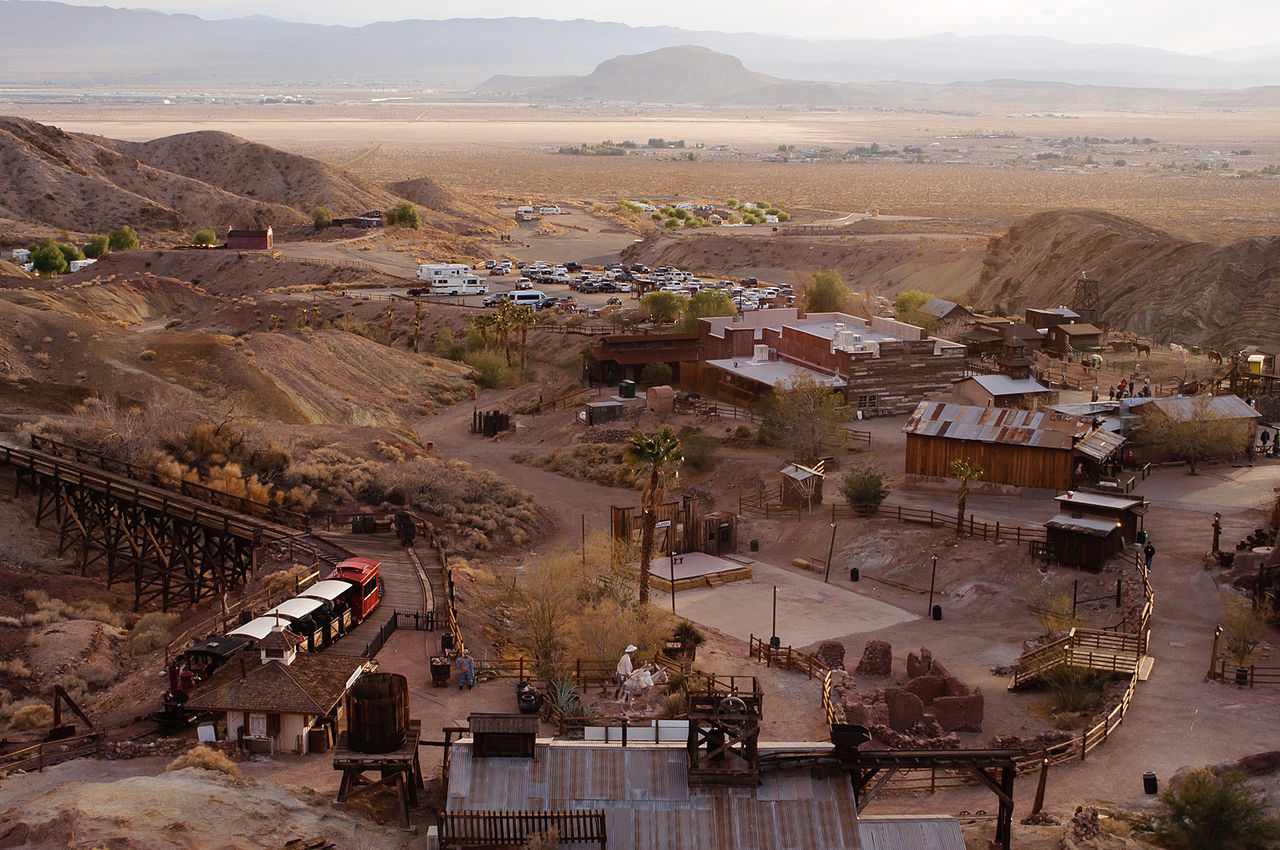 InSapphoWeTrust, CC BY-SA 2.0, Wikimedia Commons
InSapphoWeTrust, CC BY-SA 2.0, Wikimedia Commons
Calico (Cont.)
Unfortunately, by the mid-1890s, silver prices declined, rendering mining operations less profitable. Consequently, the population diminished, and Calico was largely abandoned. In the 1950s, Walter Knott purchased and restored the town, turning it into a county park.
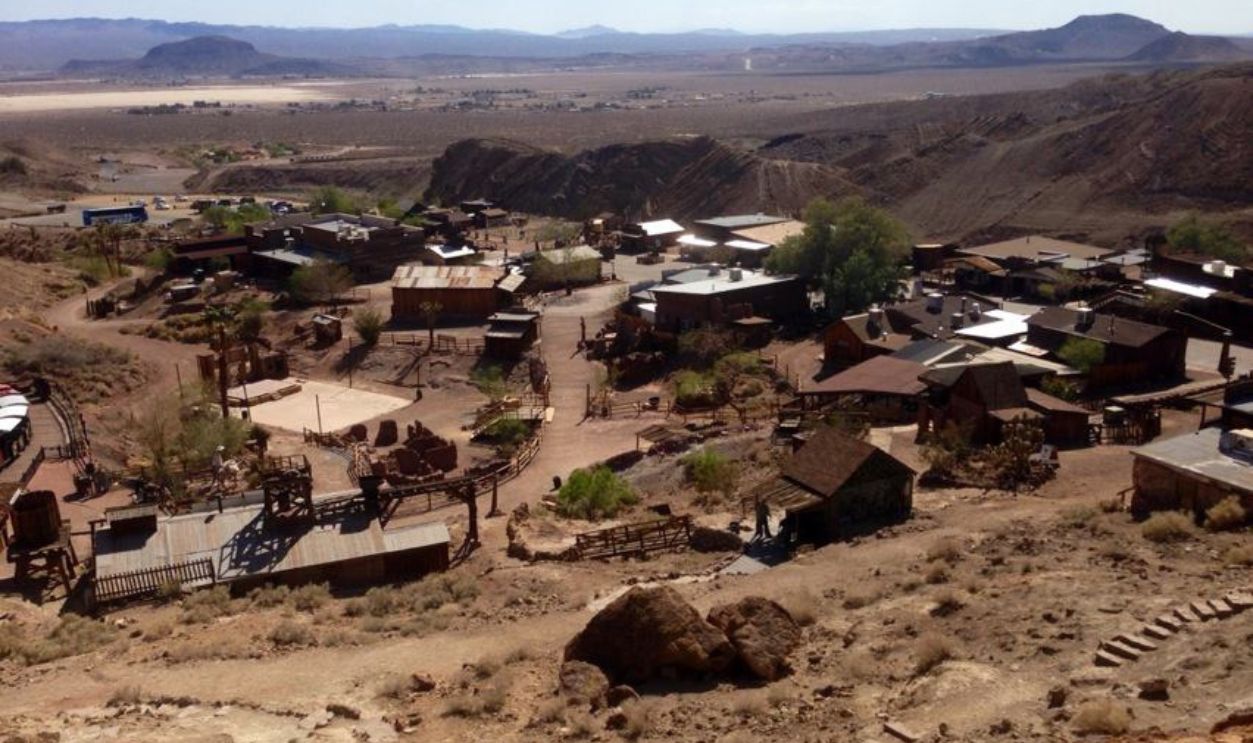 Niceley, CC BY-SA 3.0, Wikimedia Commons
Niceley, CC BY-SA 3.0, Wikimedia Commons
Goldfield
Goldfield, Nevada, experienced rapid growth after gold was discovered in 1902. By 1906, the town's population had surged to around 20,000 residents, making it Nevada's largest city at the time. However, as gold deposits became depleted, mining operations declined.
Goldfield (Cont.)
The population had decreased to approximately 5,000 by the end of 1910. Today, Goldfield is a "living ghost town" with about 250 residents, preserving its rich history and serving as proof of the fleeting nature of boomtown prosperity.
Terlingua
In the late 1880s, the discovery of cinnabar—a mineral from which mercury (quicksilver) is extracted—turned Terlingua, Texas, into a thriving mining community. The Chisos Mining Company, founded in 1903 by Chicago industrialist Howard Perry, became the town's economic backbone.
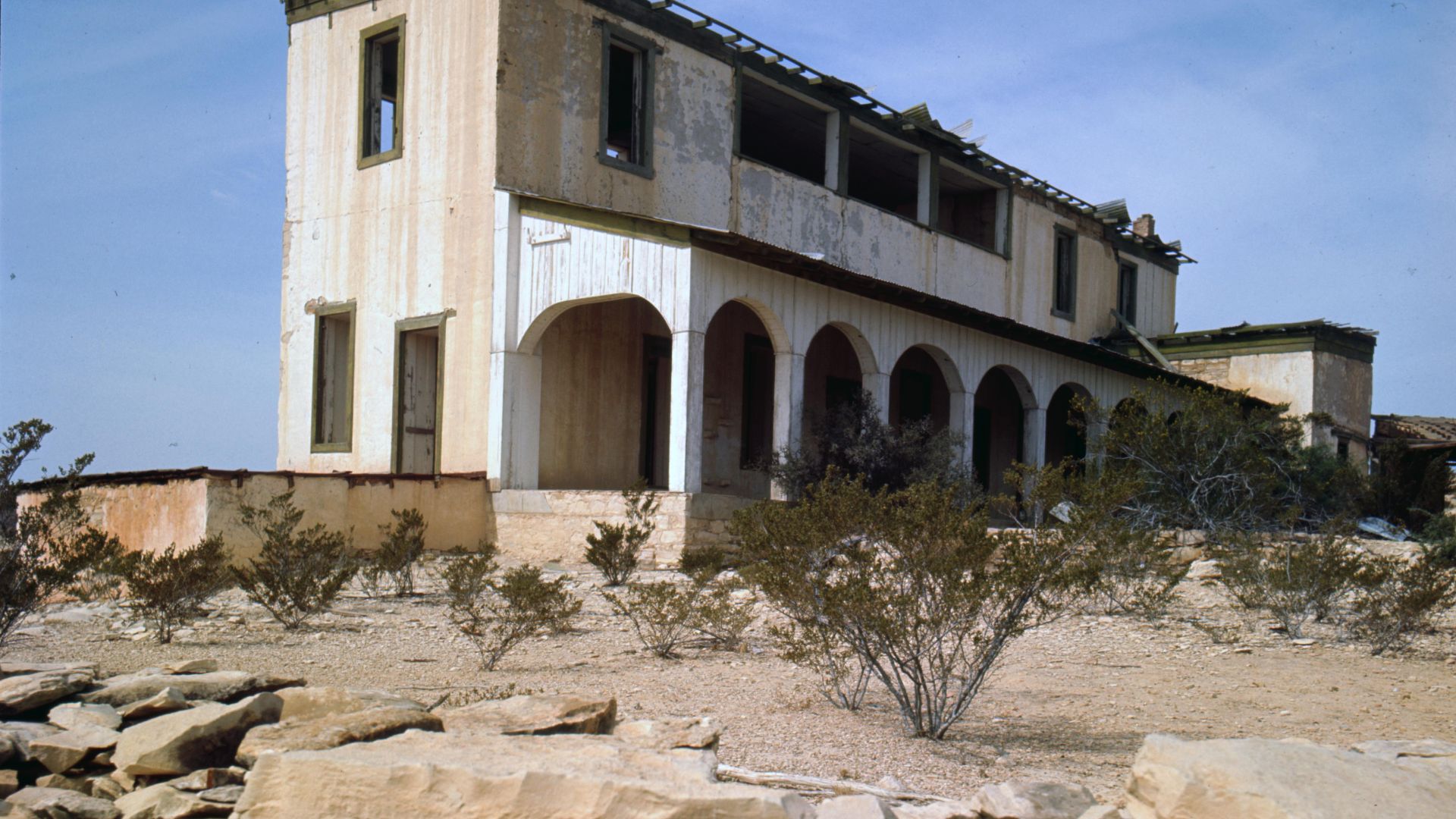 Texas State Archives from Austin, Texas, USA, Wikimedia Commons
Texas State Archives from Austin, Texas, USA, Wikimedia Commons
Terlingua (Cont.)
Reaching the zenith during WWI, Terlingua's mines supplied 40% of the United States's quicksilver. However, by the 1930s, production declined due to depleting ore reserves and falling mercury prices. Bankruptcy was filed by Chisos Mining Company in 1942, leading to the town's gradual abandonment.
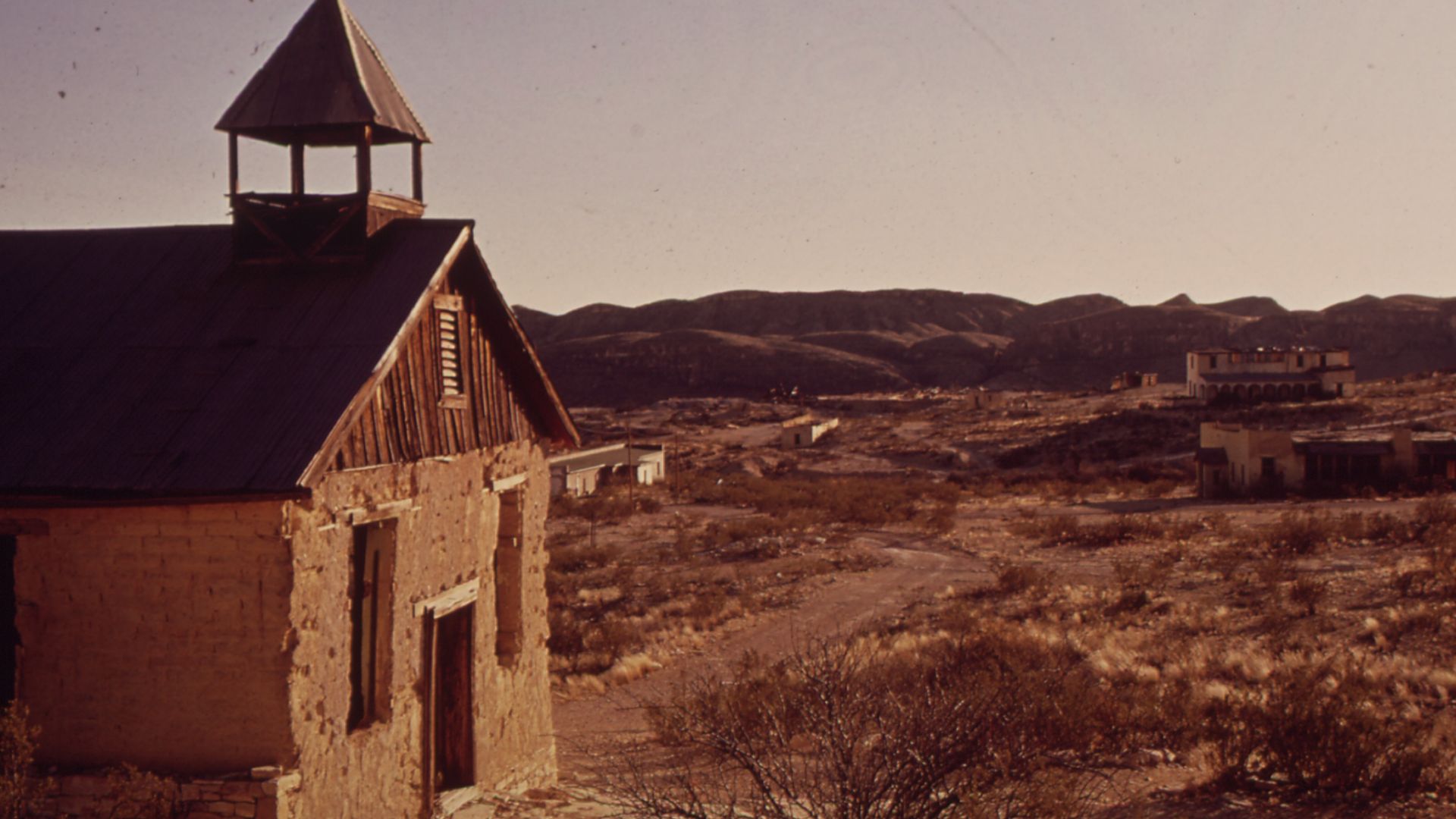 Blair Pittman
, Wikimedia Commons
Blair Pittman
, Wikimedia Commons
St Elmo
St Elmo, Colorado, was founded in 1880 near the Mary Murphy Mine, a significant silver producer. The town's prosperity peaked in 1890, with a population of about 2,000, and had amenities like five hotels and a schoolhouse.
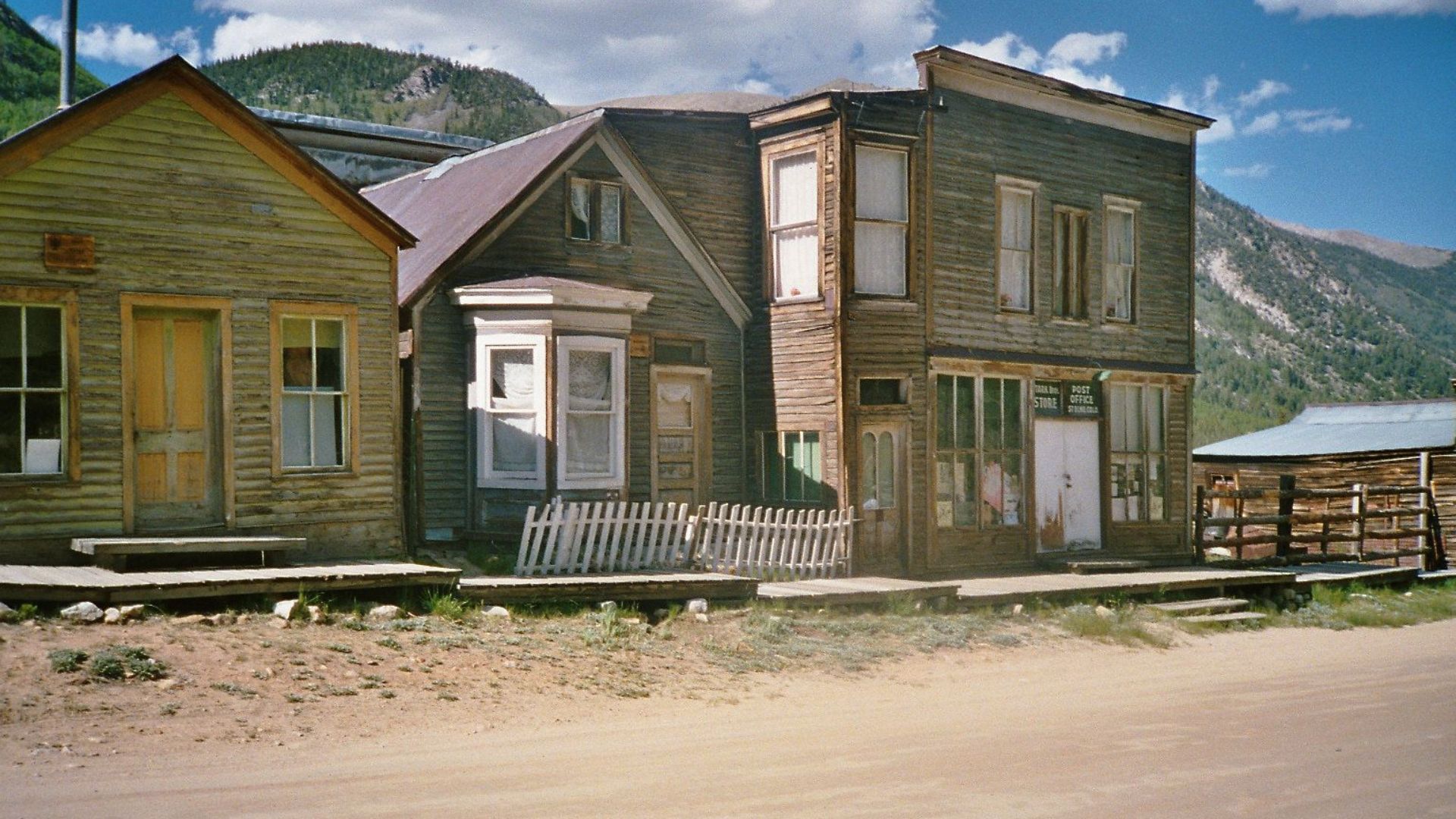 Rolf Blauert Dk4hb, Wikimedia Commons
Rolf Blauert Dk4hb, Wikimedia Commons
St Elmo (Cont.)
Sadly, the population declined as silver resources diminished and the Mary Murphy Mine closed in the early 1920s. By 1922, the Denver South Park & Pacific Railroad ceased service, accelerating the town's abandonment. Today, St Elmo is one of Colorado's best-preserved ghost towns.
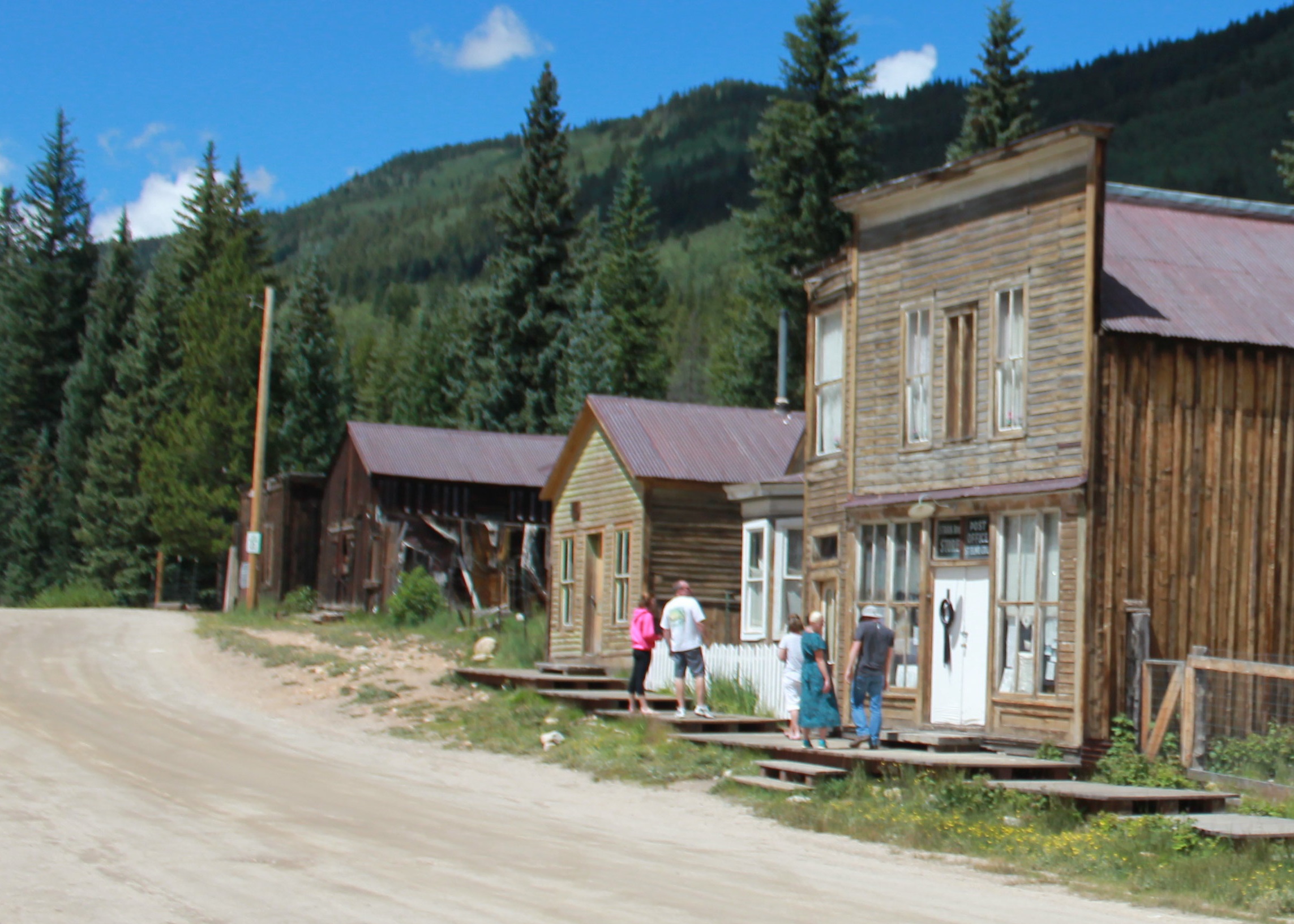 Rolf Blauert Dk4hb, Wikimedia Commons
Rolf Blauert Dk4hb, Wikimedia Commons
Central City
As gold reserves grew scarce and mining declined, Central City's population faded. In the 1950s, the once-prosperous town had barely more than a handful of people. Now, the historic district stands intact and takes tourists back in time for a peaceful, introspective look at the past and its short-lived prosperity.
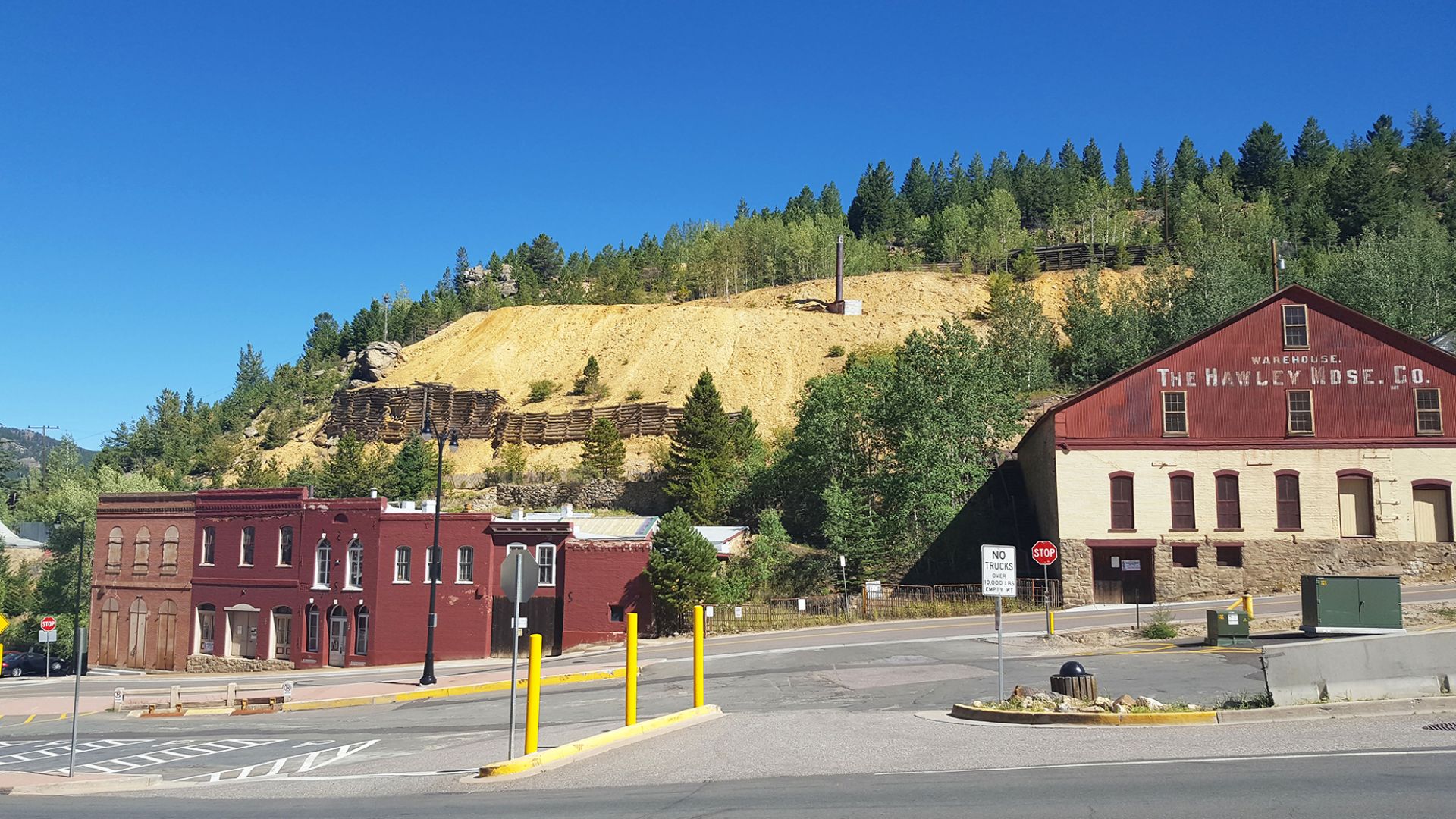 D&RG Railfan, Wikimedia Commons
D&RG Railfan, Wikimedia Commons
Central City (Cont.)
In recognition of its rich history and well-preserved architecture, Central City, along with neighboring Black Hawk, was delegated as a National Historic Landmark District in 1961. This designation acknowledges the area's significance during the Colorado Gold Rush and its collection of 19th-century buildings.
Kennecott
This ghost town in Alaska was established after the discovery of rich copper deposits by prospectors Jack Smith and Clarence L Warner. The Alaska Copper and Coal Company developed the site, leading to the construction of a mill and a company town.
Kennecott (Cont.)
At its best, Kennecott's mines produced over 4.6 million tons of ore and yielded approximately 1.183 billion pounds of copper. However, by the late 1920s, these high-grade ore reserves were depleted. This led to the closure of the mines in 1938.
Picher
Picher, Oklahoma, once thrived as a bustling mining town in the early 20th century, attracting many with its booming lead and zinc industries. Reaching the zenith, the town's mines yielded over $20 billion in ore between 1917 and 1947.
Picher (Cont.)
Decades of unregulated mining left the area riddled with hazardous piles and undermined structures. By the 1990s, health studies revealed alarming lead poisoning rates among children, with 34% affected, causing neurological issues. The town was officially disincorporated in 2009.
Glenrio
Situated on the Texas-New Mexico border, Glenrio began as a railroad station named Rock Island in 1903. Renamed Glenrio by the Rock Island and Pacific Railroad in 1908, it became a bustling stop for travelers along the Ozark Trail starting in 1917.
Glenrio (Cont.)
When US Route 66 was established in 1926, Glenrio increased in prominence and provided tourists with services such as gas stations, motels, and restaurants. The development of Interstate 40 in 1973 skirted Glenrio and resulted in an enormous loss of tourists and commercial activity.




